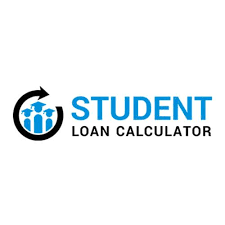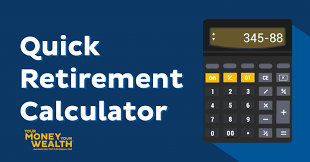Take control of your student loan repayment journey with our innovative tool Student Loan Amortization Calculator which is also called Loan Calculator Student Loans. This tool will help you plan your budget, evaluate your repayment options, and track your progress, empowering you to make informed decisions and achieve a debt-free future with confidence.You will get detailed info in Student Loan Amortization Table.
Student Loan Calculator
Student Loan Amortization Table
| Year | Balance | Payment | Principal | Interest | New Balance |
|---|
Student loans are a popular way for students to finance their education. They allow students to borrow money to pay for tuition, room and board, and other expenses related to their studies. However, many students and their families do not fully understand how student loans work, the different types of student loans available, how to apply for them, and what happens when it comes time to repay them. In this comprehensive guide, we will cover everything you need to know about student loans.
How Do Student Loans Work?
Student loans are financial aid that must be repaid with interest. They are designed to help students pay for their education when other funding sources, such as scholarships, grants, or personal savings, fall short. When you take out a student loan, you are borrowing money from a lender, usually the federal government or a private lender.
The amount of money you can borrow depends on several factors, such as your year in school, your cost of attendance, and your financial need. The interest rate on the loan can be fixed or variable, depending on the type of loan you choose. Some student loans also have origination fees, which are charges to process the loan.
Once you receive the loan money, you can use it to pay for tuition, room and board, textbooks, supplies, and other expenses related to your education. You can also use it to cover living expenses, such as rent and food, if you have enough left over after paying for your education expenses.
Types of Student Loans
There are several types of student loans available to students, each with its own terms and conditions. The two main categories of student loans are federal and private.
Federal Student Loans
The federal government offers several types of student loans, including:
Direct Subsidized Loans: These loans are available to undergraduate students who demonstrate financial need. The federal government pays the interest on the loan while you are in school, during the grace period, and during deferment periods.
Direct Unsubsidized Loans: These loans are available to undergraduate and graduate students, regardless of financial need. Unlike subsidized loans, you are responsible for paying the interest on the loan while you are in school, during the grace period, and during deferment periods.
Direct PLUS Loans: These loans are available to graduate and professional students, as well as parents of dependent undergraduate students. These loans require a credit check and have a higher interest rate than other federal student loans.
Perkins Loans: These loans are available to undergraduate and graduate students with exceptional financial need. The interest rate on Perkins Loans is fixed at 5%.
Private Student Loans
Private student loans are offered by banks, credit unions, and other financial institutions. These loans are not backed by the federal government and usually have higher interest rates than federal student loans. Private student loans may also have stricter eligibility requirements and fewer repayment options.
How to Apply for Student Loans
To apply for federal student loans, you must complete the Free Application for Federal Student Aid (FAFSA). The FAFSA is used to determine your eligibility for federal student aid, including grants, scholarships, work-study programs, and loans.
To apply for private student loans, you will need to submit an application to a lender. The lender will review your credit history and other factors to determine if you are eligible for the loan. If you are approved, the lender will provide you with the loan terms and conditions.
How Does Student Loan Repayment Work?
Student loan repayment can be a daunting task, especially if you are not sure how it works. However, it is essential to understand the different repayment options available to you so that you can make informed decisions about your student loan debt.
Standard Repayment Plan
The standard repayment plan is the most common and straightforward repayment option for student loans. Under this plan, you are required to make equal monthly payments over a set period, usually 10 years. The monthly payment amount is calculated based on the amount you borrowed, the interest rate on the loan, and the repayment period.
For example, suppose you borrowed $20,000 with an interest rate of 5% over a 10-year repayment period. In that case, your monthly payment would be approximately $212. This plan is beneficial because it helps you pay off your loan quickly and saves you money on interest over the life of the loan.
Graduated Repayment Plan
The graduated repayment plan is another option available for federal student loans. This plan starts with lower monthly payments that increase gradually over time. This plan is designed to help graduates who may not have a high salary in their first few years of employment.
Under this plan, your payments start low and increase every two years. The repayment period is usually 10 years, but it can be extended up to 30 years for consolidated loans. While this plan may help you manage your payments in the short term, it may end up costing you more in interest over the life of the loan.
Income-Driven Repayment Plans
If you have a high student loan balance, a low income, or both, you may want to consider an income-driven repayment plan. These plans base your monthly payment on your income and family size and extend your repayment period to up to 25 years.
There are four main income-driven repayment plans available:
- Income-Based Repayment (IBR)
- Pay As You Earn (PAYE)
- Revised Pay As You Earn (REPAYE)
- Income-Contingent Repayment (ICR)
Under these plans, your monthly payment is typically capped at 10-20% of your discretionary income. After 20-25 years of making payments, any remaining balance on your loans is forgiven.
Public Service Loan Forgiveness
If you work for a government agency or non-profit organization, you may be eligible for Public Service Loan Forgiveness (PSLF). This program forgives the remaining balance on your federal Direct Loans after you have made 120 qualifying monthly payments while working full-time for a qualifying employer.
Qualifying payments include payments made under any of the income-driven repayment plans, as well as the standard repayment plan. To be eligible for PSLF, you must work for a qualifying employer and have qualifying loans. The forgiven amount is not considered taxable income.
Trouble Repaying Student Loans
If you are having trouble making your student loan payments, you may be able to apply for a deferment or forbearance. A deferment allows you to temporarily postpone your payments, while a forbearance allows you to temporarily reduce or pause your payments.
However, interest continues to accrue during these periods, which means you will end up paying more over the life of your loan. It is important to explore all your options and understand the long-term consequences of each before making a decision.
Pros and cons of Student loan
Pros of Student Loans
Access to Higher Education: One of the most significant benefits of student loans is that they provide access to higher education for many individuals who would not otherwise be able to afford it. Student loans allow students to pay for tuition, fees, textbooks, and other expenses associated with attending college or university.
Investment in Future Earnings: For many students, the cost of tuition and other college expenses is too high to be paid upfront. Student loans can bridge this financial gap, allowing students to invest in their future earning potential. By obtaining a college degree or advanced degree, individuals may increase their earning potential over time.
Credit Building: Student loans are typically long-term loans that require regular payments. Paying on time and in full can help establish a positive credit history, which can be beneficial for future credit applications, such as buying a car or a home.
Flexibility: There are several repayment options available for student loans, including income-driven repayment plans and deferment or forbearance options. These options provide some flexibility for borrowers who may be experiencing financial hardship or difficulties making their monthly payments.
Cons of Student Loans
Debt Burden: Student loans can be a significant financial burden for borrowers, particularly for those who borrow large amounts of money. Borrowers must repay their student loans with interest, which can make the total cost of the loan much higher than the original borrowed amount.
Limited Financial Flexibility: For many borrowers, student loan payments take up a significant portion of their income, which can limit their financial flexibility. This can make it difficult to save for other goals, such as buying a home or starting a family.
Interest Accrual: Interest accrues on student loans from the time they are disbursed, which means that borrowers owe more than they originally borrowed. This can result in borrowers paying significantly more than the original borrowed amount over the life of the loan.
Default Risk: If a borrower is unable to make their student loan payments, they may go into default, which can have serious consequences. Defaulting on a student loan can result in wage garnishment, tax refund offsets, and damage to the borrower’s credit score.
Lack of Bankruptcy Protection: Student loans are generally not dischargeable in bankruptcy, which means that borrowers must repay their loans even if they experience financial hardship or job loss.
Overall, student loans can provide valuable access to higher education, but they also come with significant financial risks and limitations. It is essential for borrowers to carefully consider their options and to only borrow what they can reasonably afford to repay.
Tips and things to keep in mind when taking out student loans
Taking out student loans can be a daunting task, but it’s an essential part of paying for higher education. Here are some tips and things to keep in mind when taking out student loans:
Exhaust your other financial aid options first: Before taking out student loans, make sure you have applied for all available scholarships, grants, and work-study programs. These options do not need to be repaid, so they should be your first priority.
Understand the different types of student loans: There are two main types of student loans: federal and private. Federal loans are usually less expensive and have more flexible repayment options. Private loans may have higher interest rates and stricter repayment terms. Be sure to understand the differences between the two before deciding which to take out.
Borrow only what you need: It can be tempting to borrow more than you need to cover expenses like housing, transportation, or other non-school-related expenses. However, keep in mind that you will need to repay everything you borrow with interest. Only borrow what you need to cover your tuition and essential expenses.
Know the interest rates and fees: Before taking out a student loan, make sure you understand the interest rates and fees associated with the loan. Federal loans usually have lower interest rates than private loans, but it’s important to shop around and compare rates from multiple lenders.
Consider future earning potential: Keep in mind that the amount you borrow for your education will need to be repaid with interest. When deciding how much to borrow, consider your future earning potential and how easily you will be able to make your loan payments after graduation.
Read and understand the terms of the loan agreement: Before signing a loan agreement, make sure you read and understand all the terms and conditions of the loan. Pay close attention to the repayment terms, interest rates, fees, and any borrower protections or benefits.
Keep track of your loan balance and repayment schedule: Make sure you keep track of your student loan balance and repayment schedule. This will help you avoid missing payments or falling behind on your loans.
By keeping these tips in mind, you can make informed decisions about taking out student loans and avoid falling into unnecessary debt. Remember, taking out student loans is an investment in your future, so be sure to borrow responsibly and plan for your future repayment.

Student Loan Amortization Calculator
Education is a powerful investment in your future, but it often comes with a financial burden. For many students, taking out loans is a necessary step to cover tuition, books, and living expenses. To manage this financial commitment effectively, it’s essential to understand how student loans work and how they can be repaid. This is where the Student Loan Amortization Calculator and the concept of a Student Loan Amortization Table come into play.
The Role of a Student Loan Calculator:
A Student Loan Calculator, specifically designed for student loans, is a powerful tool that empowers borrowers to make informed decisions about their education debt. It assists in calculating essential loan details, such as monthly payments, total interest costs, and repayment periods.
Using a Loan Calculator for Student Loans:
To utilize a Loan Calculator for Student Loans, you need to input critical information, including the loan amount, interest rate, and loan term. The calculator then generates a detailed repayment schedule, breaking down each payment and specifying the portions allocated to principal and interest.
Student Loan Amortization Table:
A Student Loan Amortization Table is a detailed chart that outlines the entire repayment journey of your student loan. It begins with the initial loan balance and provides a monthly breakdown of payments over the loan term. This table helps you visualize how your loan balance decreases over time as you make regular payments.
Key Benefits of These Tools:
Budgeting: Student Loan Calculators allow you to budget effectively by providing a clear understanding of your monthly financial obligations.
Comparison: You can compare different student loan options and repayment plans, enabling you to choose the most suitable one for your financial situation.
Transparency: Student Loan Amortization Tables offer transparency into your loan’s progress, showing how each payment affects your principal balance and interest costs.
Early Repayment Strategy: By using these tools, you can explore the benefits of making extra payments or repaying your student loan ahead of schedule, potentially saving on interest.
Financial Planning: These calculators and tables empower you to plan your financial future by understanding the impact of your student loans on your overall financial picture.
In Conclusion:
The journey of repaying student loans can seem overwhelming, but with the assistance of a Student Loan Amortization Calculator and the insights provided by a Student Loan Amortization Table, you can navigate this path with confidence. These tools enable you to make informed decisions, manage your debt responsibly, and work towards a brighter financial future as you invest in your education and your future career.
FAQ
Q: What is a student loan?
A: A student loan is a type of loan that is used to pay for college or university education expenses, including tuition, fees, books, and living expenses. Student loans are typically offered by government entities or private lenders and must be repaid with interest over time.
Q: How do I apply for a student loan?
A: To apply for a student loan, you typically need to complete a Free Application for Federal Student Aid (FAFSA) or apply directly to a private lender. The application process may require proof of enrollment in a college or university and may also require a credit check or cosigner.
Q: What types of student loans are available?
A: There are two main types of student loans: federal student loans and private student loans. Federal student loans are offered by the U.S. government and typically offer lower interest rates and more flexible repayment options. Private student loans are offered by banks and other private lenders and may have higher interest rates and more stringent eligibility requirements.
Q: How much can I borrow with a student loan?
A: The amount you can borrow with a student loan depends on a variety of factors, including the type of loan you are applying for, your credit history, and the cost of attendance at your college or university.
Q: When do I have to start repaying my student loans?
A: Repayment of student loans typically begins after you graduate or leave school. However, some loans may require repayment while you are still enrolled in school or during a grace period after you leave school.
Q: What are my repayment options for student loans?
A: There are several repayment options available for student loans, including standard repayment, income-driven repayment, and deferment or forbearance. Standard repayment involves making fixed monthly payments over a set period of time. Income-driven repayment adjusts your monthly payment based on your income and family size. Deferment or forbearance allows you to temporarily stop making payments or reduce your monthly payment amount.
Q: What happens if I can’t make my student loan payments?
A: If you are unable to make your student loan payments, you may be able to apply for deferment or forbearance to temporarily suspend or reduce your payments. If you default on your student loan, however, you may face serious consequences, including wage garnishment, tax refund offsets, and damage to your credit score.
Q: Can I refinance my student loans?
A: Yes, it is possible to refinance your student loans to potentially lower your interest rate or monthly payment. Refinancing involves taking out a new loan with a private lender to pay off your existing loans. However, refinancing may not be the best option for everyone and may result in the loss of certain borrower protections, such as deferment or forbearance.
Legal Notices and Disclaimer
All Information contained in and produced by the ModernCalculators.com is provided for educational purposes only. This information should not be used for any Financial planning etc. Take the help from Financial experts for any Finace related Topics. This Website will not be responsible for any Financial loss etc.





